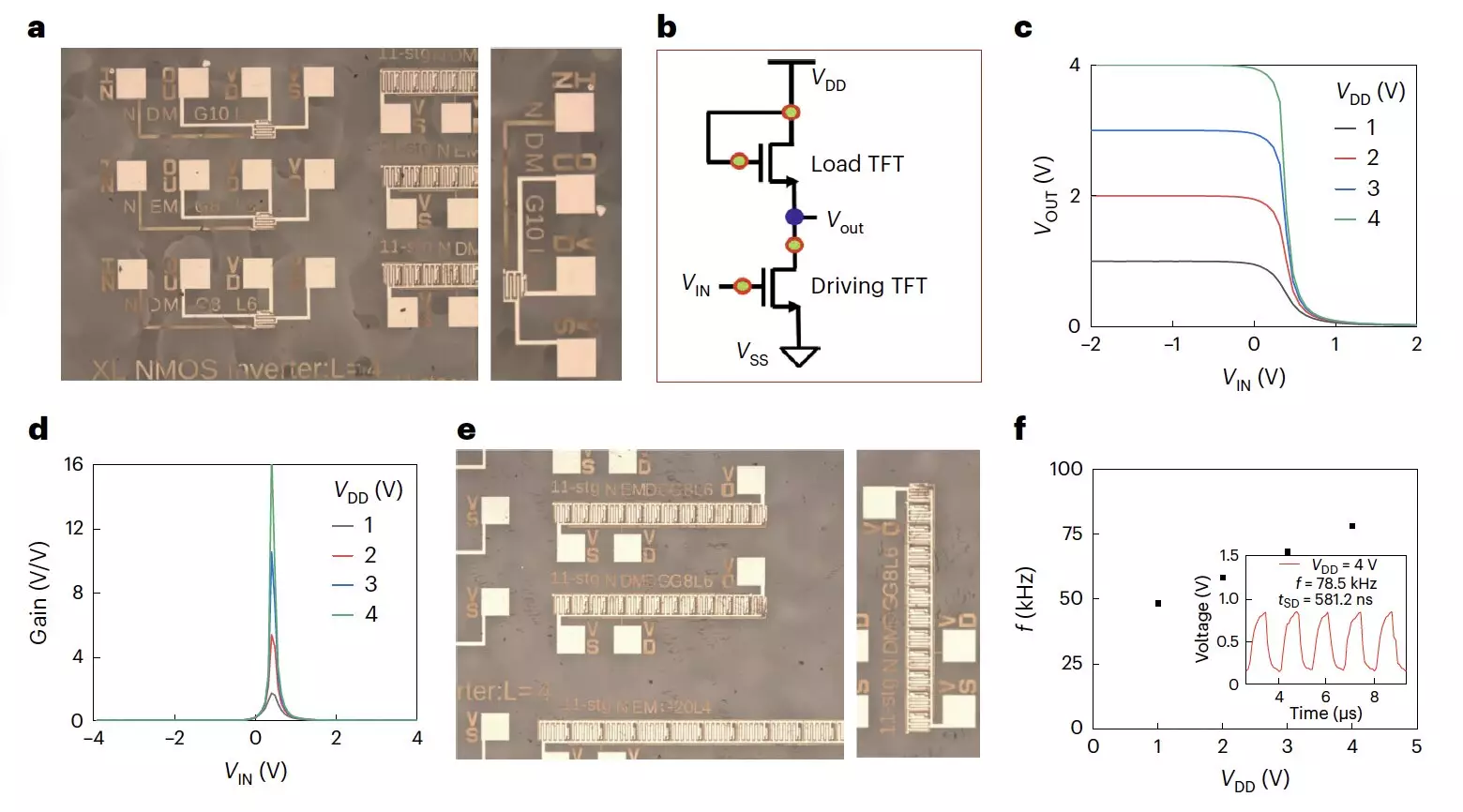Metal halide perovskites are crystalline materials that have shown remarkable optoelectronic properties, making them promising candidates for thin-film transistor development. Recent studies have focused on tin (Sn) halide perovskites, achieving high field-effect hole mobilities, but facing challenges in developing n-type transistors. This article explores the latest advancements in metal halide perovskite-based n-type transistors, focusing on lead halide perovskites.
Lead halide perovskites have been identified as potential candidates for n-type transistors, but their ionic defects have limited electron mobilities to around 3-4 cm2 V−1 s−1. Recent research by teams at various institutes worldwide, detailed in a paper in Nature Electronics, introduced a new strategy using formamidinium lead iodide (FAPbI3) perovskites. This strategy enabled the fabrication of n-type transistors with field-effect mobilities of up to 33 cm2 V−1 s−1.
To improve the performance of n-type transistors, researchers utilized a methylammonium chloride (MACI) additive. This additive helped regulate strain in FAPbI3, enhancing its properties. By focusing on strain relaxation of the perovskite lattice and suppressing undercoordinated lead through tetramethylammonium fluoride multidentate anchoring, the researchers were able to stabilize the alpha phase, balance strain, and improve surface morphology, crystallinity, and orientation. This approach also facilitated low-defect perovskite-dielectric interfaces.
Initial tests on the n-type transistors created using the new strategy showed promising results, including high electron mobilities, minimal hysteresis, and excellent operational stability under both negative and positive bias stress. The researchers utilized these transistors to produce all-perovskite unipolar inverters and 11-stage ring oscillators. This progress opens up possibilities for highly performing and cost-effective integrated circuits incorporating metal halide perovskite transistors, with potential applications in various electronic devices.
Moving forward, the proposed fabrication strategy for n-type transistors using metal halide perovskites could lead to further advancements in integrated circuit development. By testing and integrating these n-type transistors into various electronic components, researchers aim to explore new opportunities for leveraging the unique properties of perovskite materials in creating cutting-edge technologies.


Leave a Reply